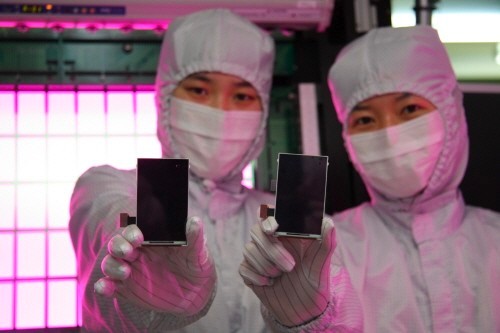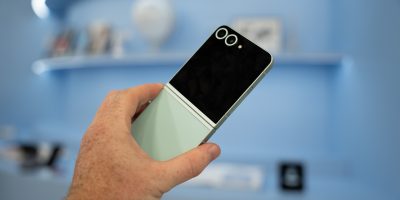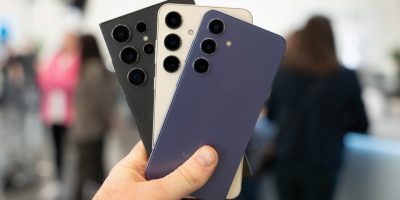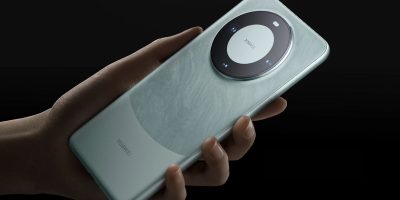
When it comes to hi-res displays, using traditional methods it is nearly impossible to squeeze more than 440 pixels per inch into a typically-zied smartphone screen. Samsung’s upcoming Full HD Super AMOLED display — said to be the centerpiece of the Galaxy S4 — just about reaches the limit. That screen measures 4.99 inches, but Samsung is looking into ways to bring a similar pixel density to smaller screen sizes.
How do they plan on accomplishing this? By reinventing the pixel. Current screen technology uses square pixels, and only so many can be crammed into a display before the rules of geometry take over. But those same rules of geometry are being used to reshape the pixel in a way that will allow for more on smaller screens, perhaps at a clip even greater than 440 ppi.
According to a report from DigiTimes, Samsung is experiminting with hexagonal and diamond-shaped pixels as a replacement for square pixels. But will the additional pixels be more than chum for the advertising department? It is said that the human eye maxes out at around 300 pixels, hence the Retina display moniker Apple has attached to its 326 ppi iPhone display. But in a smartphone race based on gigahertz, megapixels, and screen resolution, Samsung will do what it has to do get a leg up on the competition, even if the end result makes no technical difference to our eyes.
[via TechCrunch]











Get… Rid of… AMOLED
Personally, once I went black, I can’t go back.
Simply awesome
So I thought once I got my gNexus and I still like the colors but after slowly noticing the burn in and over saturated colors I’m not so sure anymore. I hate when a picture looks ok on the phone but washed out on a regular monitor, not cool.
Why?
Amoled rocks, it just hasn’t reached its potential yet.
I love Amoled, they just need to focus on getting rid of pentile and improving color accuracy.
I love amoled
Leave it to Samsung to truly innovate. I really look forward to their 2013 products. Kudos!
They should make them snow flake shaped (since no one snow flake is alike) and over lay them. Thus creating a solid block of ice… ; )
kids, don’t smoke crack… haha jk
i would take a blurrier (is that a word?) screen to gain more battery life.
“It is said that the human eye maxes out at around 300 pixels.” yeaaah that is wrong, it is only true if you have 20/20 or worse eyesight while holding the screen 12 inches away from the eyes.
Read this
http://www.cultofmac.com/173702/why-retina-isnt-enough-feature/
http://wordmunger.com/?p=1348
May be the writer meant maxing out at 300ppi for the normal viewing distance of a mobile. I can’t really see people using a mobile less than 12 inches away under “normal” circumstances. Even 12 inches is pretty close for viewing distance on a mobile.
Read the source I posted, most people have a better eyesight than 20/20, so 300ppi isn’t enough with normal distance, unless your vision have degenerated to that 20/20 or worse, which it shouldn’t unless you are quite old. If you don’t intend reading my sources at least look at the graph in this pdf for eyesight.
http://www.ski.org/Colenbrander/Images/History_VA_Measuremnt.pdf
I admit I had glossed over your links (apologies for this) because 20/20 has so often been mentioned to me to imply perfect vision. However, even someone who has excellent vision (let’s say 20/8 vision), will having a ppi of more than 440 on a mobile device be distinguishable at “normal” viewing distances for a mobile? I genuinely feel this is another pointless tech race for marketing “bigger numbers = better”. I really wish the tech race for bigger numbers was on battery life as this is something that genuinely is needed and appreciated by a huge % of users.
20/20 is called perfect vision because you don’t need glasses, if you had 22/20 you would need glasses, that is what “perfect vision” implies.
“However, even someone who has excellent vision (let’s say 20/8 vision),
will having a ppi of more than 440 on a mobile device be distinguishable
at “normal” viewing distances for a mobile?”
http://www.cultofmac.com/173702/why-retina-isnt-enough-feature/
Why ask question already answered in my source? jump down to the part
What “True Retina” Apple Displays Would Look Like
And in case you have 20/20 or worse
“Back in 2010, Japan’s NHK Science & Technology Research Laboratories discovered that across the board, the smaller the pixels, the more real
an on-screen object seemed to the person viewing it, even if they
didn’t have perfect vision. In fact, this effect is so profound on
individuals that it eventually reaches a point where you have pixels
small enough that on screen objects are completely indistinguishable from real objects.”
The link you posted calls 20/20 “standard vision” which seems better because describing someone who doesn’t wear glasses as having perfect vision is like describing people who don’t have hearing aids as having perfect hearing. The reality is that there are many degrees of vision even for those who don’t wear glasses. According to this website (http://www.aoa.org/x4695.xml), 22/20 would implies you can see something at 22 feet what a person with normal vision can only see at 20 feet (thus implies you have better than 20/20 vision).
Not quite read your own source again, however I was also meant to say 20/22 because the other would have meant something else. You also need to look more into what Visual acuity is, since you still doesn’t quite have the fully understanding of it, and sound like you think it can be used to describe the prescription in the glasses. This should help you understand it better.
”
The metric equivalent of 20/20 vision is 6/6 vision. At 20 feet or 6 metres, a human eye with nominal performance is able to separate lines that are one arc minute apart (equivalent to lines that are spaced 1.75 mm apart). A vision of 20/20 is considered nominal performance for human distance vision. A vision of 20/40 is considered half as good as nominal performance. A vision of 20/10 is considered twice as good as nominal performance.[2]”
People often forget the usage case of moving the phone closer to your face to get a better look. Sure, you can zoom, but that effectively clips most of the image. Who hasn’t held a picture right up to their nose to see details more clearly?
Aside from the fact that they’re wrong (see post by Imparus), retina based arguments are only valid for a limited usage model
This is completely stupid. Anything over 300ppi is not only wasted but actually hurts in other areas. Pushing all those extra wasted pixels will mean shorter battery life and require a beefier processor to keep the phone running smooth. Rather the money and effort go into something more worth while (e.g. bringing one of the many battery improving technologies we hear about into an actual handset).
Still it’s useful tech and help samsung to win the competition using such a ground breaking display specs.
Useful to who? If you ask a group of smartphone users whether they’d prefer having higher ppi screens or better battery life, I’d bet that the overwhelming majority would pick the better battery life.
I’m waiting for the day someone invents a way for one pixel to display ALL colors.
Pixel density doesn’t need to go any higher, I have an iPad 3 and a Nexus 4, can’t see pixels on either one, the displays are perfect. Put the money into researching way to put bigger battieries in phones
don’t worry Samsung has you covered, they are investing on flexible batteries that are paper thin and will provide the same power as the ones we use today allowing for bigger batteries to fit into thinner/smaller phones http://www.androidauthority.com/flexible-batteries-bend-fold-106308/
Exactly, don’t really understand people who wants to stump development. I said it before but I’ll say it again, we’ll have 4k’s on our phones in the near future. The more pixels the closer it gets to real life.
What if you can’t see the difference between a 300 ppi screen and 400 ppi screen?
“A lot of people will claim that the battle to make screens with higher pixel densities doesn’t matter because we’ve already passed the threshold of it being useful. They’re wrong. This isn’t like the battle for Megapixel count that the camera industry waged for a few years. Boosting pixel density turns a digital object on a screen into a life-like objects.”
“Back in 2010, Japan’s NHK Science & Technology Research Laboratories discovered that across the board, the smaller the pixels, the more real an on-screen object seemed to the person viewing it, even if they didn’t have perfect vision. In fact, this effect is so profound on individuals that it eventually reaches a point where you have pixels small enough that on screen objects are completely indistinguishable from real objects.”
““Back in 2010, Japan’s NHK Science & Technology Research Laboratories discovered that across the board, the smaller the pixels, the more real an on-screen object seemed to the person viewing it, even if they didn’t have perfect vision. In fact, this effect is so profound on individuals that it eventually reaches a point where you have pixels small enough that on screen objects are completely indistinguishable from real objects.”
At what size screen? At what viewing distance? Don’t you have to have the content at the same resolution? Is everyone really going to see a difference when displaying content that’s only 720p or 1080p? Most content on YouTube isn’t 1080p, let alone 4K or higher. I think they should be focusing on displaying more colors and accurate color.
Then it results in a spec war that’s meaningless. Most of the content isn’t even displayed at those resolutions.
Maybe because it delays, time and resources in to pointless specifications that have no merit. Samsung could focus more energy on improving the half life of its blue O.L.E.D.’s and work towards actually producing an O.L.E.D. Tv a normal person can purchase, or how about working on the burn in O.L.E.D. are famous for. We dont need no stupid 4k resolution on a phone, to win a pissing match with Apple.
But that’s what the Android geeks want. they want a spec war, which many times turns out to be a waste of time. I laughed when the Geekbench tests came out and the A6 dual core processor running at a lower clock speed out did the quad core Exynos chip the S3’s were using. But many of the Android fans didn’t recognize those tests, they insisted that quad core is better and a faster clock rate is better. So why argue. Let em have their little spec war.
Citing benchmarks is a spec war in itself …
It’s not as bad as trying to mislead people that a quad core older generation chip is faster than a dual core later gen chip. Please. What the benchmarks indicate is that the number of cores, clock speed aren’t what makes the difference, it’s just the processor design, because the cores and other aspects of these ARM chips are different, but people typically only see the specs on the product web site.
Same thing with car engines. Do you only look at number of cylinders and horsepower ratings? Well, there are cars that have smaller engines that can perform faster than cars with a bigger engine. You have to look at the weight, gear ratios, torque, etc. and it all comes out to 0-60 and MPG as a result of how the cars measure up.
Yeah, but in the end, which platform is actually going to stick around and be consistent? The one that makes a profit, increases sales, and generates a stable business because they attract lots of government, corporate, small business, and educational buyers in addition to average consumers that don’t mind paying for a well supported, consistent user experience. Every platform has faults along the way, but it’s ultimately which one are you the most happy with that has the apps that you want/need and does the job with the best satisfaction. Apple has stayed around despite all of the PC companies and Microsoft dominating, and over time that platform proved that these PC hardware makers can’t continue their business model without making a decent profit. Apple is making around 38-40% gross profit overall, which is COMPLETELY reasonable for them to make. Some industries like software companies work on a 90% gross profit model, which is why Microsoft stays around, but their hardware OEMs are having lots of difficulty hanging on.
I agree, any higher and it just makes CPUs work harder and drain battery.
Google can improve the screen calibration on its screen to begin, the Nexus 7 might have high number of pixels but the colors were off.
I can see pixels, but only when I put the thing right in front of my face. Like, one inch in front of my face… I love my Nexus 4!
but unlike TV’s, you are more likely to put a smartphone real close to your face
Lol, there is a big difference… I’ve seen 4k and 8k TV’s.. they are simply amazing and stunning to look at. So I don’t mind manufacturers trying to push more pixels per inch so they can support the high resolution that 4k/8k TV’s have in the future…
Instead of putting bigger batteries in phones, how about an alternate form of energy, other than lithium? There’s research and some products out there that claim to charge within seconds and have a longer battery life than lithium… I think it’s time for call for different battery technology, rather than asking for a phone as thick as a brick…
But Samsung is talking about smartphone screens, not big panel TV.
So we are all going to go out and get 4K video to view on a smartphone? I highly doubt it, the amount of storage it needs to show a 2 hour movie? You won’t have enough room in SSD storage so why bother?
In the future, I’m pretty sure someone will figure out a way to compress those 4k vids to a smaller file, or maybe cloud streaming would be the answer? lol
It won’t be at least a couple more years regardless until we can hear rumors about 4k displays on phones
Let em waste money on it. I’m waiting to see the IGZO panels from Sharp. I don’t think Apple would invest $2Bil and others invest in Sharp if they didn’t know what they have in the works with IGZO technology.
Look, I’ll let apple tell me what my eyes can and cannot see, thank you very much!
I bet if they just brought a 1080p 5″ display out and claimed that it was 2160p: everyone would go: “Wow, awesome, I need this.” and wouldn’t actually perceive any difference! Especially if in software they would have 3840×2160 drawable area, but in reality they would only show every other pixel…. I wouldn’t, except in the battery life..
My gs3 is perfect. Cant see pixels at all and i usually hold my phone about 10-12 inches away. Even when i bring it really close…to attempt to see pixels, it is very difficult….im not sure but i think gs3 has 306 ppi…imma have to check…
Yeah it is 306 ppi.
How about a screen that isn’t over saturated?
settings>display>screen mode>natural
that’s Samsung’s solution.
still doesn’t look natural, any real solution?
Not sure about Play Store apps, but Cyanogenmod has had color multipliers and color gamma tuning since at least CM9. Every time I flash a new CM ROM, I find myself turning down the green color multipliers cause the colors are so off on my Gnex.
The pixel density war is over. Apple won it over two years ago with the 326ppi iPhone 4. ANYTHING over that is utterly pointless. You can only see a tiny bit of graininess in the 306ppi GS3 because of Pentile. For non-pentile – 300ppi is perfection. Anything over that is a waste of both battery life and processing power.
Get over it. For displays – concentrate on better battery life, better outdoor visibility, more accurate colors, better contrast, etc. Pixel density is done. Move on.
A 3.5 inch display is also pointless no matter the dpi. Not enough real state to show a full website. At 300 dpi, 4.5″ 1280×720 >>>>> 3.5″ 960×640
Well I really don’t care what they do, as long as its a non pentile layout. Pentile looks like crap regardless of resolution.
What about the masses of people who don’t want a 5″ phone? How about they do some work on a smaller 720p screen?